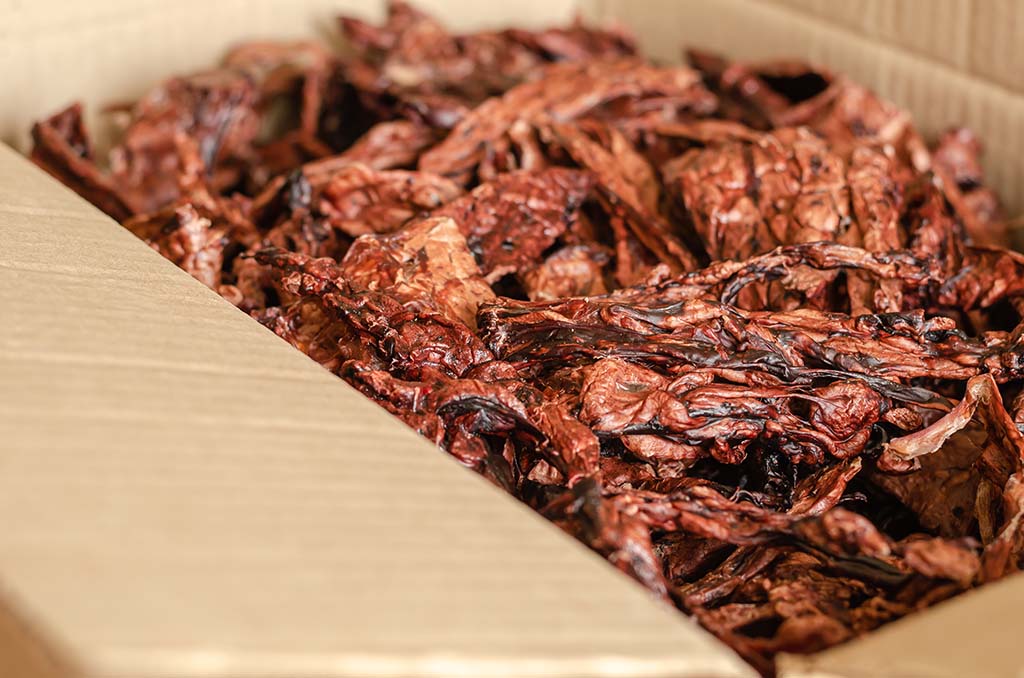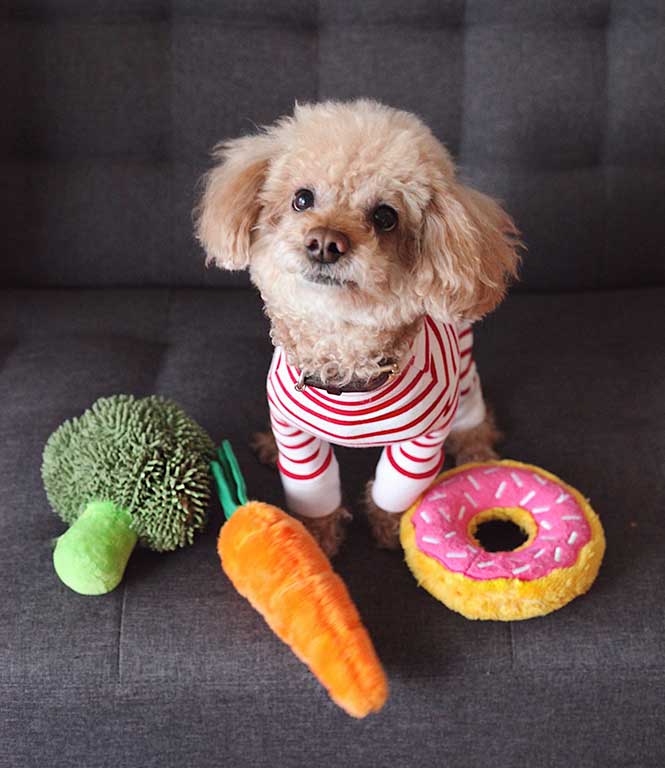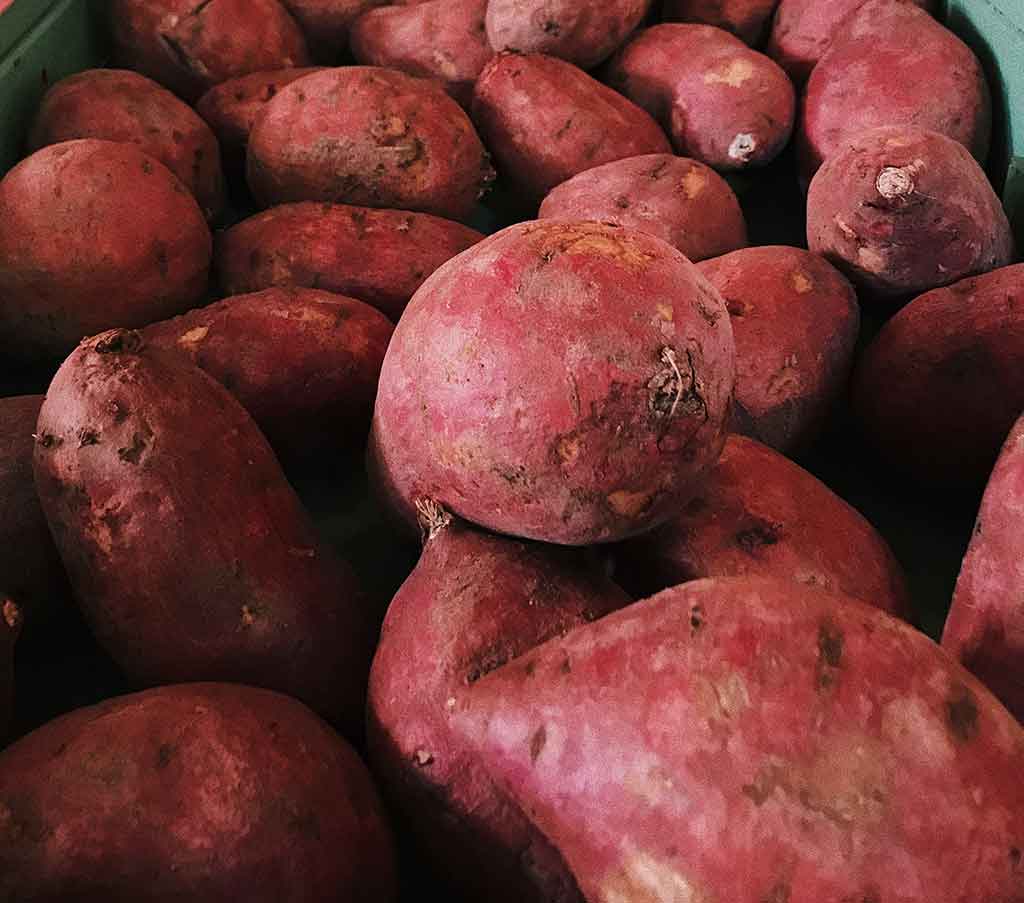Dehydrated Dog Treats: Everything You Need To Know (+ Recipes)

I enjoy coming up with creative enrichment ideas for my…
In this article, I’ll explain everything there is to know about dehydrated dog treats, including how you can easily make homemade dog treats yourself.
As a dog owner, you’ll know how important a healthy diet is for your dog. Treats often make up a big part of your dog’s diet, especially if you’re actively training your dog.
That said, store-bought treats are not just expensive, but in recent years there have been many scandals about kidney damaging illnesses in dogs from store-bought treats.
It goes without saying that if we would make dog treats ourselves, we could be 100% sure about their ingredients and avoid such awful scandals. So, let’s find out if it really is healthier and cheaper to make dehydrated dog treats at home.
Why Do Dogs Need Treats?
Treats are such a great topic, as they’re always associated with joy, wagging tails, and happy faces. We all have unique relationships with our animals, and there are many different reasons for feeding treats. That said, the most important one is training. Dogs need treats to learn better when we start training them. By offering them something more unique than their regular food, they are more likely to listen to us.
As you can imagine, if you have a young dog that you train every day, that’s a lot of treats your dog is getting. They will make up a large part of your dog’s diet, so giving them the healthiest treats possible is just the right thing to do. If we fed our dogs’ junk all day long, it could lead to health issues, and who wants that?
Other than that, it’s a great idea to give our dogs chewing treats a few times a week. That’s because chewing releases endorphins, and endorphins help our dogs to calm down and reduce stress.
Which Dog Treats Are Bad?
Unfortunately, many industrial dog treats can be classified as bad. In a way, pet shops are really quite similar to supermarkets for humans. There’s good, and there’s bad stuff. The bad stuff usually has a long list of ingredients that nobody understands.
In recent years, there have been many reports about sick and dying pet dogs due to bad quality dog food and dog treats. In many countries, the pet food industry is self-regulated, which leaves a lot of room for faulty products that can harm our pets.
A lot of conventional dog treats that you can buy in stores have been heavily processed. Rawhide, for example, is usually chemically preserved and cleaned, before artificial flavourings are being added to make them more appealing to your dog. This means that some of them may be contaminated with toxic chemicals.
Many other treats that come in more of a bite-sized shape often contain ingredients such as glycerine, sugar, colourants, preservations, … the list goes on. These ingredients in a dog treat are both unnecessary and unhealthy for our dogs.
What treats to feed dogs
I’m a big fan of treats that are as natural as possible. Like small dehydrated fish or a dehydrated rabbit ear, but as you will learn, there are many more to choose from. I’ve just really had enough of industrial treats for dogs.
The funny part is, my dog never liked them much, to begin with. For a long time, I thought he’s one of those mysterious dogs who aren’t food motivated. Over time, I learned that I couldn’t have been more wrong. He’s absolutely food motivated, but he’s also so smart that he won’t care about bad dog treats. Now, if that’s not a sign of just how bad some of them are.
DIY – Dehydrated Dog Treats
Now that we know why we want to steer clear of bad dog treats with a nasty ingredient list, let’s have a look at how we can do better with DIY Dehydrated Dog Treats.
Spoiler Alert: It’s not rocket science, DIY dehydrated dog treats are super easy to make. There are two ways to dehydrate; you can either use an oven or a dehydrator.
A dehydrator will consume less energy than the oven, so will save you money in the long run. That said if you don’t have a dehydrator at home, feel free to use your oven for your first round of DIY dehydrated dog treats.
How to Dehydrate Dog Treats In A Dehydrator
Dehydrating Dog treats in a dehydrator is as simple as cutting the meat (or fruits, or vegetables) and putting the pieces in a dehydrator for anything between 3-8 hours. The thinner the slices, the better, as it will increase the number of treats you’re getting, as well as shortening the dehydration time considerably. Some people find it helpful to put the future treats in the freezer for a few hours beforehand, as it helps to cut them thinly.
What Can I Dehydrate For Dog Treats?
In one way or another, you can just about dehydrate everything. If you dehydrate meat, lean meats work best because fat makes the meat more susceptible to mould.
I’ve put together an overview of some dehydrated meats that you can feed your dog as a reward and chewing treat.
Wild: Deer or kangaroo, depending on where in the world you live. Get creative, think ears and antlers
Beef: beef jerky, beef ears, organs, oxtails
Sheep: lamb ears, goat’s ear (also with fur), lamb jerky meat
Dried fish: little fish, salmon skin, salmon tails, sardines
Poultry: dried chicken breasts, turkey neck or chicken necks, duck necks
How Do You Dehydrate Raw Meat For Dogs?
Dehydrating raw meat for dogs is as simple as cutting it in slices and chucking it in a dehydrator for a few hours.
First things first, cut the meat into reasonably sized slices. Aim for half a centimetre or less. If you do your first round, try cutting different shapes and sizes to find out what works best. Just cut some a bit longer, and others a bit thicker.
The next step is to put the pieces in the Dehydrator and turn it on. That’s it. Dehydrators are reasonably quiet, so you won’t even notice it running if you’re in a different room.
How long you’ll leave the dehydrator running can be anywhere between 3-12 hours. Don’t worry, you’ll get the hang of it quickly, and we did add some easy to follow recipes below. The reason you’re dehydrating the treats for so long is that you want as little moisture as possible left in the meat. That’s because moisture leads to mould, and we don’t want to mold on our dog treats.
Dehydrated Dog Treats Storage
Once you’re done with the Dehydrator, take the treats out and lay them on paper towels to let them dry for another night.
Following that, all that’s left to do (if you want to) is to cut the treats into the right size for training. With jerky, this tends to work best with pruning shears. Kitchen scissors are often not sharp and strong enough, and chicken scissors can be a bit tough to handle for cutting jerky.
When storing, it’s important that you don’t pack dry meat airtight, as this can lead to mould due to the residual moisture. Use cotton bags instead.
How Long Do Dehydrated Dog Treats Last?
Dehydrated Dog Treats can last for up to a month. That said, the way dehydrated Dog treats work is that moisture is removed from the meat. So, it will always depend on how much of the moisture you got out during the dehydration process as well as your storing method. Generally speaking, you’ll notice that they’ve expired when mould starts to build up.
Dietary Concerns For Dehydrated Dog Treats
Note that fresh meat is 75% water, so if you feed your dog 100g of dry treats, that’s almost 400g of raw meat processed. That’s a lot of calories your dog snacks on, as well as concentrated protein. If your pupper has weight problems, don’t forget that these treats count into his daily food intake!
Furthermore, if you have an elderly dog or a dog with kidney problems, be cautious that your dog isn’t having too much protein with not enough water due to the treats being so concentrated. A simple trick to increase your dog’s water intake is to add some tasty homemade bone broth to his water.
Does Dehydrating Meat Kill Bacteria?
In regards to bacteria, the USDA’s current recommendation for making jerky safely is to heat meat to 160°F (70°C) and poultry to 165°F (74°C) before starting the dehydration process.
This ensures that if any bacteria was present, it would be destroyed by wet heat. High-end dehydrators will include this step in the process.
Alternatively, you can heat the strips in the oven until they reach the recommended internal temperature, and then move them in the Dehydrator to finish the dehydration process.
Note that heating the jerky after dehydrating might not kill all bacteria due to the bacteria becoming more heat resistant during the drying process.
DIY Dehydrated Dog Treats Recipes
Below you’ll find some simple recipes that will get you started for your first batch of dehydrated dog treats.
Dehydrated Sweet Potato Recipe
If you like having meat-free alternatives as dog treats, make some dehydrated Sweet Potato treats for your dog. They’re a healthy and natural treat for your dog with a wide range of benefits. Sweet Potatoes are rich in Vitamin A, B6, C, Potassium, Calcium and iron. They’re also low in fat.
Making Dehydrated Sweet Potato Dog Treats is as simple as cutting them into thin slices, putting them in your Dehydrator and turning it on for 3-10 hours. This length depends on how thick your slices are. Check on them after 6 hours and then take it from there. It will get very easy to tell after you’ve done a few batches.
You know that the treats are done when there’s no more moisture. You’ll be able to twist the stripes without breaking them.
Dehydrated Beef Jerky Recipe
Making Dehydrated Beef Jerky for your dog is super simple. All you have to do is slice (lean) beef into thin strips. Lean parts of the meat work best because fat can make meat more susceptible to mould, and we want to avoid that.
The next step is to place the stripes in your Dehydrator and to turn it on 5-12 hours. Similar to the Sweet Potato treats, the length will depend on the thickness of your strips. For your first few batches, it’s best to test them after 6 hours and then take it from there. It will get easier over time.
Once you’re done, put the stripes on paper towels and let them air out overnight. Then store them in cotton bags. Be careful of storing them in airtight containers as the residual moisture can cause mould to build up.
Best Dehydrator To Buy For Dog Treats
The best Dehydrator you can buy for dog treats is the Excalibur 3926TB. When buying a dehydrator for dog treats, I pay attention to the volume. That’s because the more I can fit in a dehydrator, the less often I have to run it, which means I’m saving on the electricity cost. I’m also paying attention to whether the Dehydrator has a high enough temperature range to kill off any potential bacteria in meat.
Last time I checked the Excalibur 3926TB sold for just under $300 on Amazon (Link to Amazon to check today’s price)
I like this Dehydrator for dog treats for several reasons.
- It comes with nine trays, which means that you can make many treats at once, which saves you electricity compared to if you had to run the Dehydrator more often.
- The temperature range is high enough to meet safety standards for dehydrating meat for jerky (e.g. it kills any possible bacteria).
- It has a built-in on/off switch and adjustable thermostat with 26-hour timer.
Alternatives to the Excalibur 3926TB
If the Excalibur 3926TB is out of your budget, you can literally buy any of the cheaper models BUT you will want to heat any meat you’re using in the oven before putting it in the Dehydrator if the cheaper Dehydrator doesn’t have a high enough temperature range. Keep in mind that using the oven typically uses more power, which will increase your electricity cost in the long run.
What's Your Reaction?
I enjoy coming up with creative enrichment ideas for my dogs. DIY & Crafting has always been a big part of my life since I was a child.


